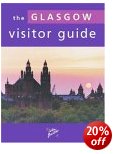  |
City of GlasgowTrongate
|
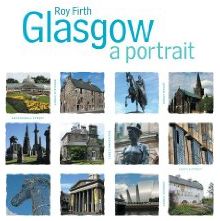 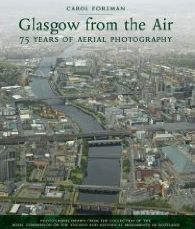 |
|
Trongate
Steeple at Glasgow Cross
Trongate is one of the oldest streets in the city of Glasgow. Located in the area of the Merchant City, known as "Old Glasgow", it is on the main route into the city centre from the East End. Trongate begins at Glasgow Cross, the original centre of medieval Glasgow, marked by the Tolbooth clock tower. |
Trongate in Glasgow Heading to the west it becomes Argyle Street, the most southerly stretch of Glasgow's "Golden Z" shopping area. ( Buchanan Street
and Sauchiehall Street form the other two arms of the Z ) |
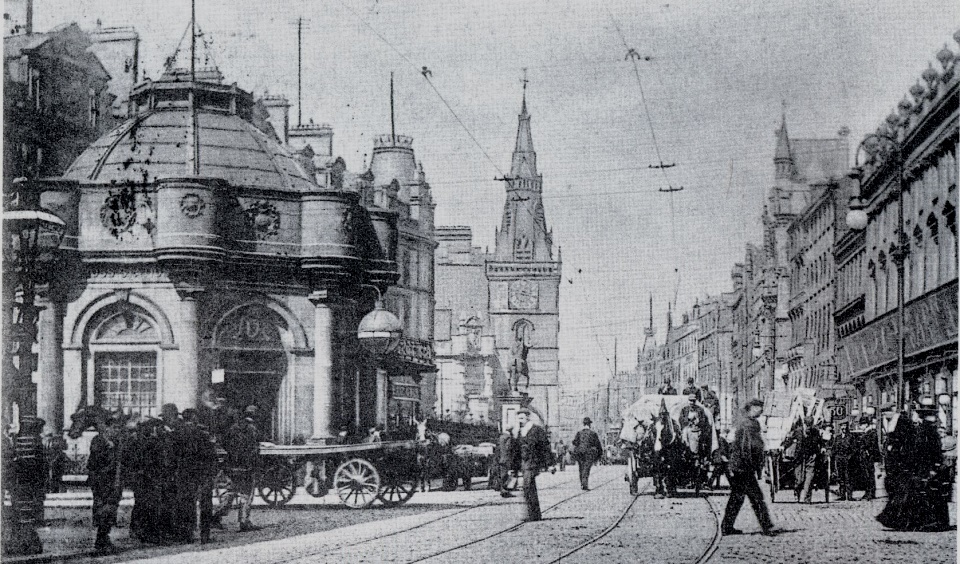 Glasgow
Cross Station
|
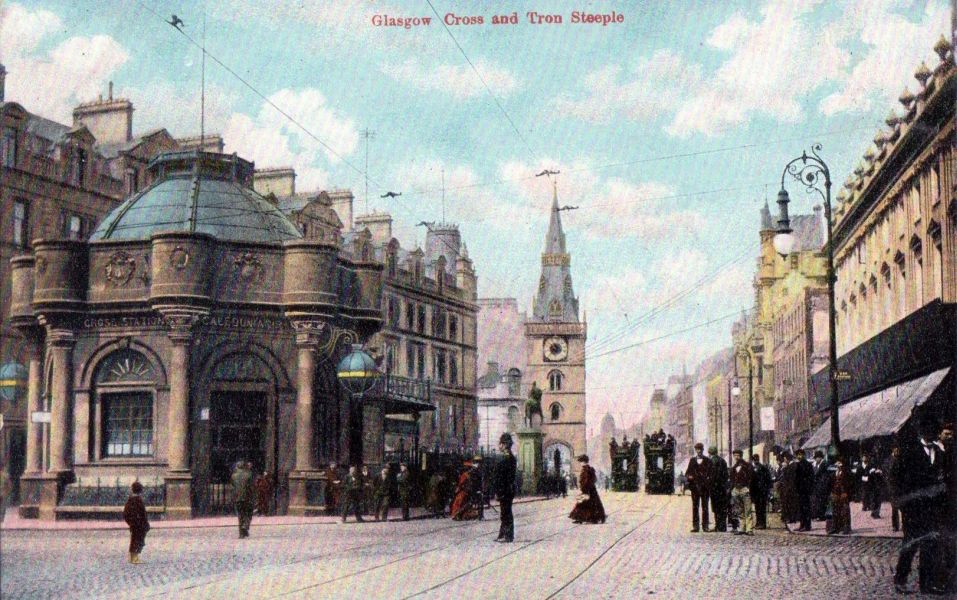 Glasgow
Cross Station
|
Building
in Trongate
in Glasgow
|
Building
in Trongate
in Glasgow
|
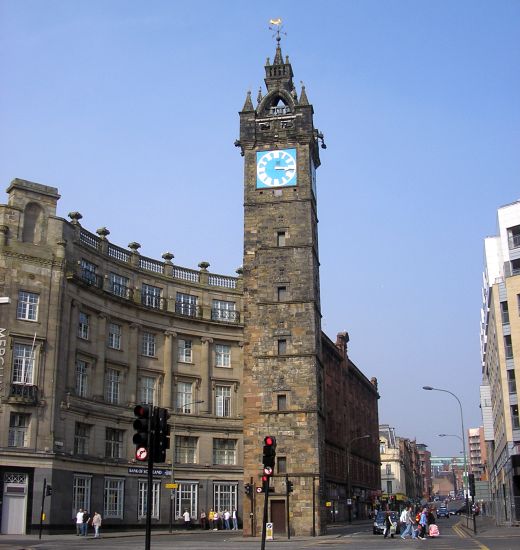 Tolbooth
Steeple at Glasgow Cross
The Clock Tower was part of the original City Chambers ( destroyed by fire in 1926 ) |
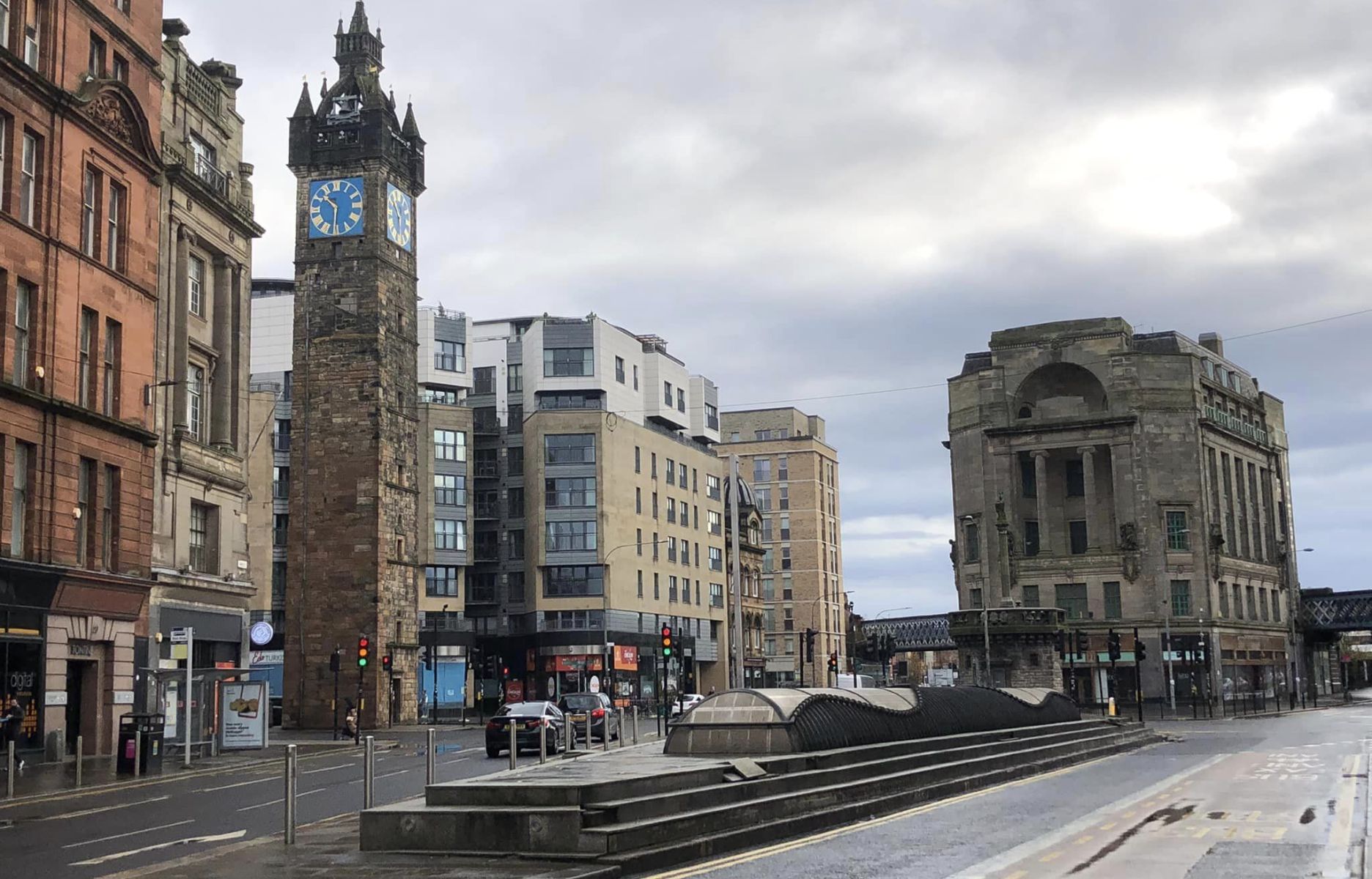 Tolbooth
Steeple
at Glasgow Cross |
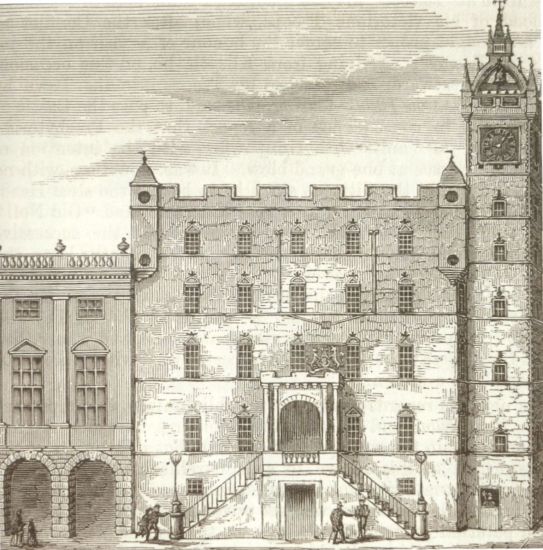 Old Tolbooth
Steeple
at Glasgow Cross |
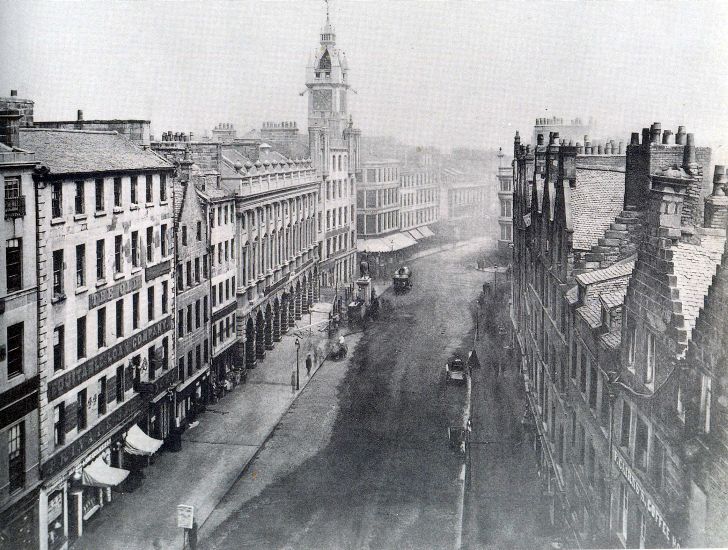 Trongate
in 1826
|
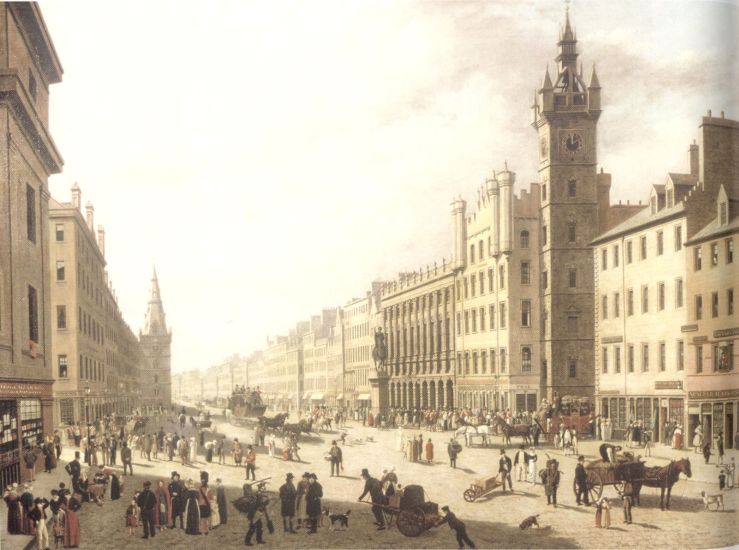 Trongate
in 1826
|
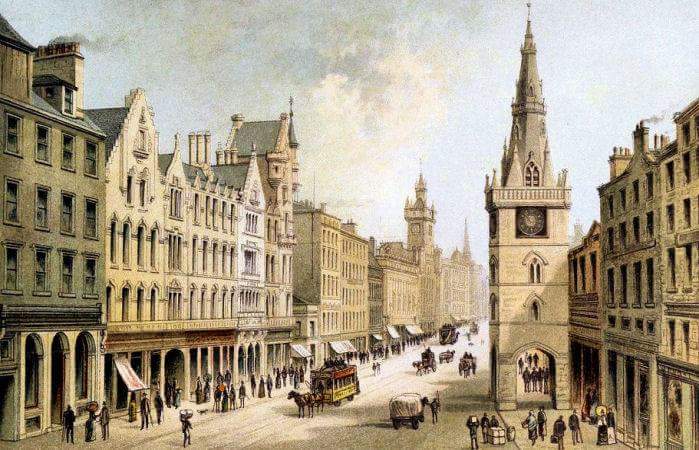 Old Glasgow - Trongate |
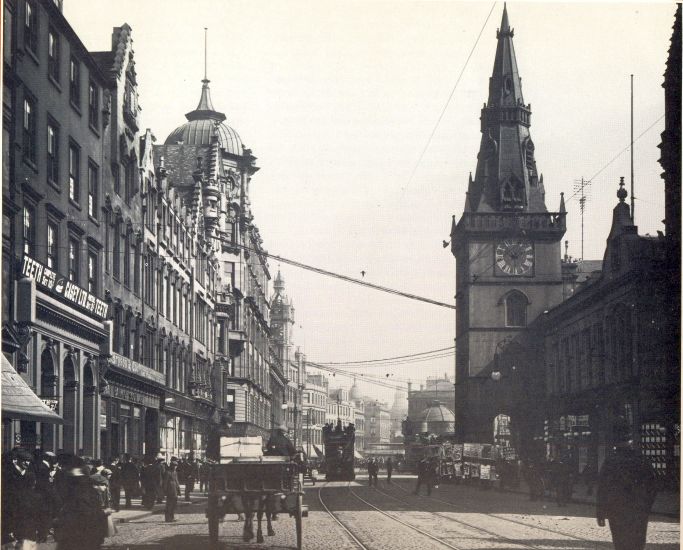 Trongate
in 1930
|
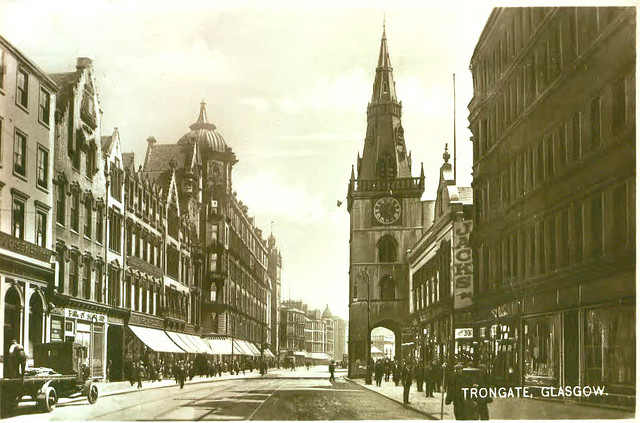 Trongate
in 1930
|
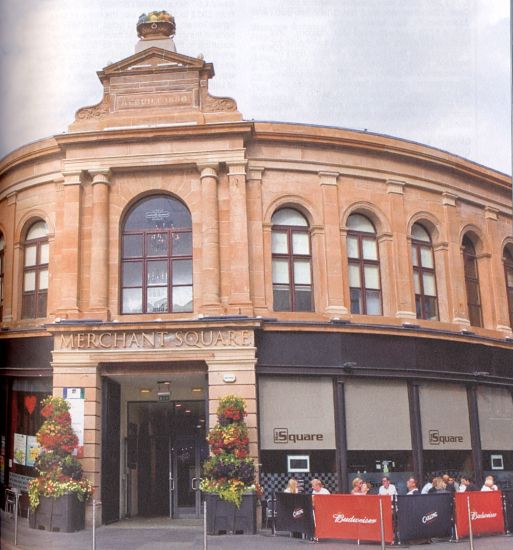 Merchant
Square
in Glasgow |
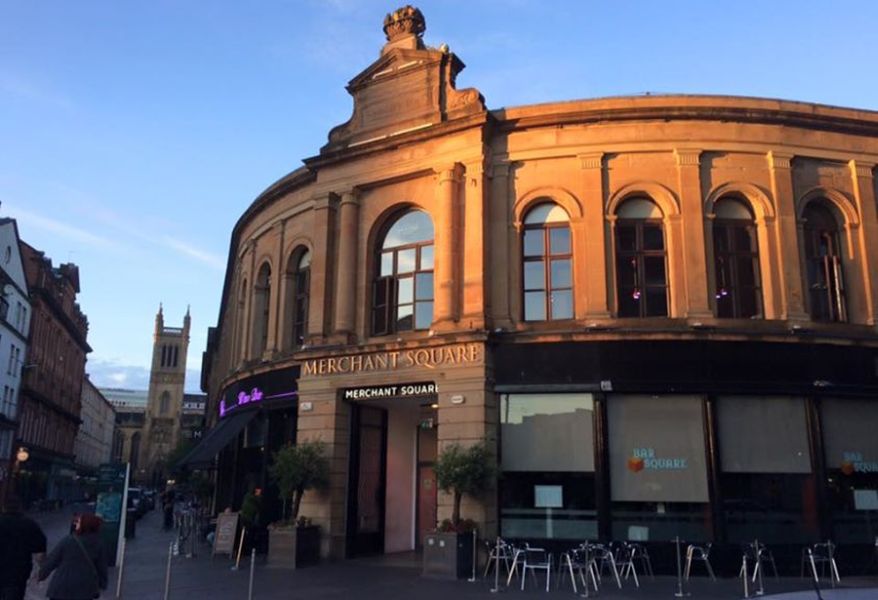 Merchant
Square
in Glasgow |
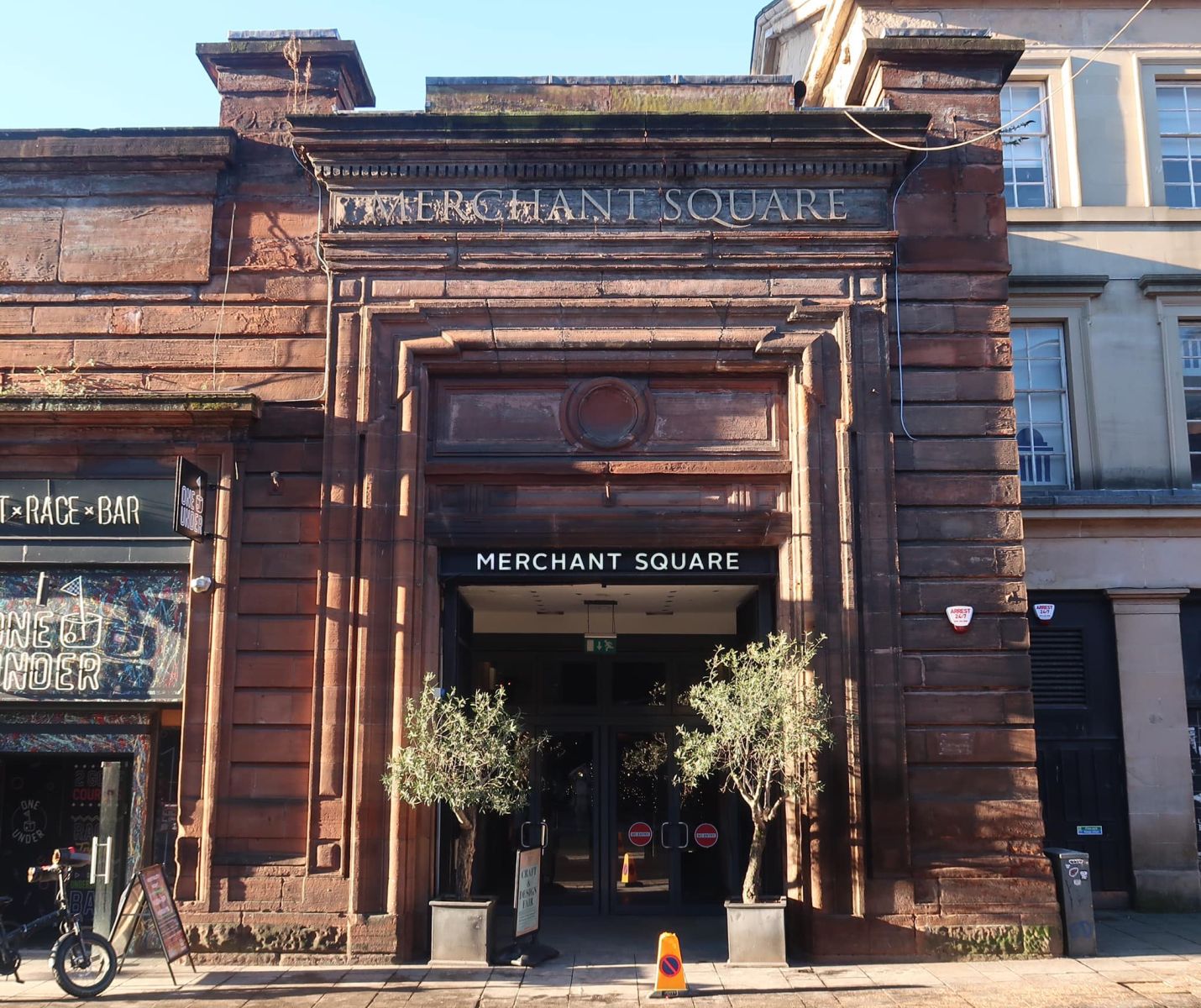 Merchant
Square
in Glasgow |
 Merchant
Square
in Glasgow |
Building
in Trongate
in Glasgow |
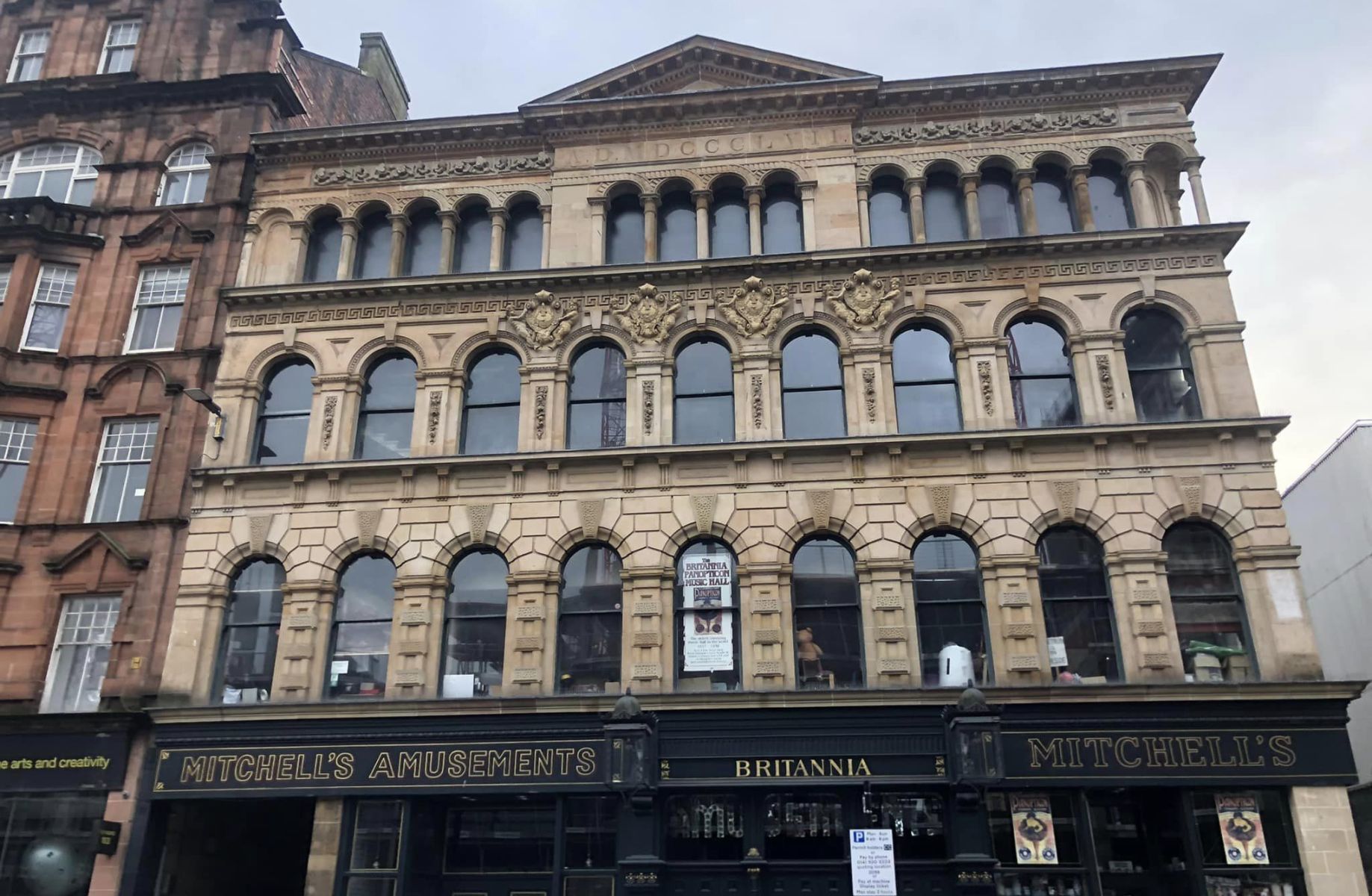 Britannia Music Hall
113-117 Trongate One of the oldest remaining music halls in Britain. Built in 1857/58 |
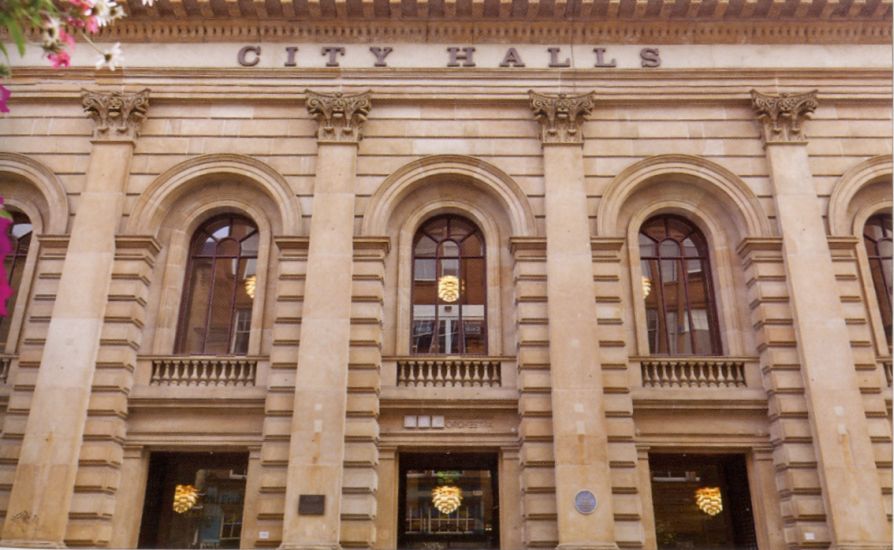 City Halls
in the Merchant City area of Glasgow |
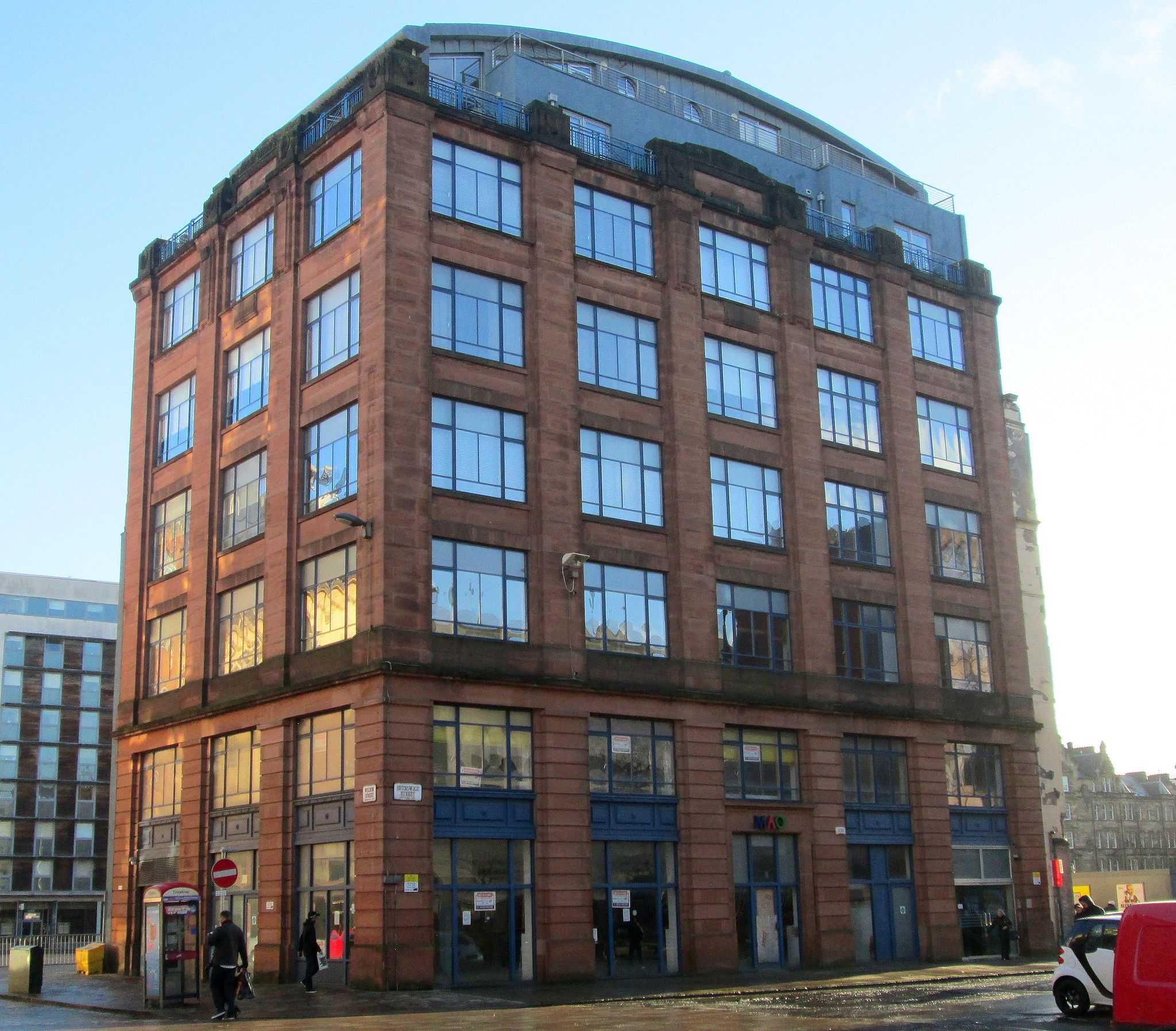 Art Deco building
in the Merchant City area of Glasgow |
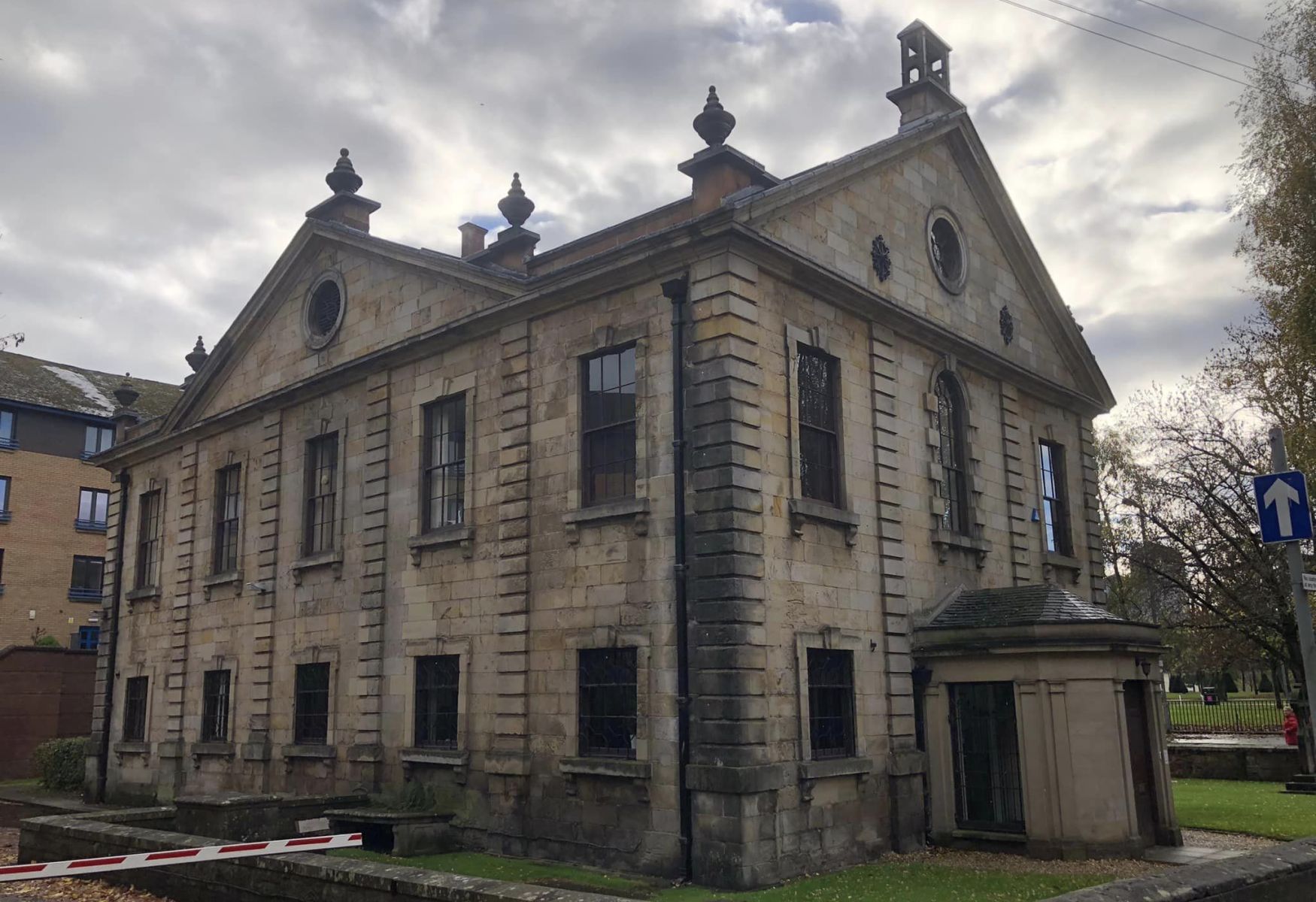 St
Andrew's-by-the-Green
The Whistlin' Kirk built 1750-1752 the oldest surviving Episcopal Church in Scotland. It was also the first church in Glasgow to install an organ for public worship, resulting in the nickname, "Whistlin' Kirk" or the "Kist o' Whistles”. In Turnbull Street near Glasgow Green |
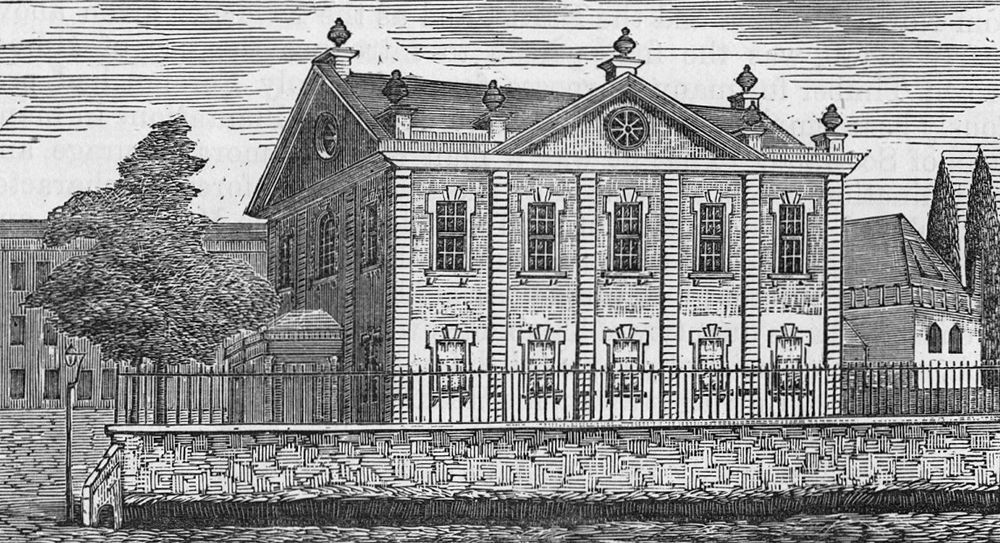 |
GLASGOW'S LEGACY OF A TRANSATLANTIC TRADE
Glasgow merchants said little about the morality of the slave trade that swelled their coffers’.
Dissent against a petition to abolish the slave trade was lead by the Reverend Lapslie of Campsie, an enemy of the “black-nebs”, as the friends of political reform were nicknamed.
It was argued that it was wrong for the Kirk to step outside the ecclesiastical sphere and become involved in “political” matters.
However, the petition sparked a lengthy debate in the Glasgow Courier, between Senex and A Friend to Mankind, with both using scripture to support their arguments.
Thirty years later, with the movement for the emancipation of slaves gathering pace, William Smeal, a Gallowgate tea merchant, founded the Glasgow Anti-Slavery Society,
which became one of the most active in Britain.
The Smeal Collection in the Mitchell Library holds several visual representations of slavery - one a depiction of a black slave on a plantation
with the inscription: “Am I not a man and a brother?”
Smeal’s own radicalism is reflected in the fact his daughter, Jane Smeal, was involved in setting up a Glasgow Ladies’ Emancipation Society in the 1830s.
Whether ethical capitalism is feasible or not is contested to this day.
In the 19th century, the phrase would have provoked more extreme opinions. It’s certainly clear that during the American Civil War, three decades on, Clyde
steamers were smuggling goods through the blockades of the south - and making rather a lot of money along the way. The heritage of the
Confederate flag and the Ku Klux Klan is, of course, another field of historical debate many Scots would prefer to stay clear of.
The development of the modern nation state and the interactions of commerce, science and morality with social change proved equally
problematic in the 20th century and seem as conspicuous as ever in the early 21st. How will Glasgow, no longer an imperial city, respond to the pressing moral questions of today’s modernity‘?
PLACES IN GLASGOW ASSOCIATED WITH THE SLAVE TRADE:
Glassford Street
John Glassford, one of the foremost tobacco lords, purchased Shawfield Mansion, off Argyle Street, in 1760.
Glassford Street was laid out on the site of the house and garden.
The Trades Hall was built on the west side of this street in the 1790s.
Buchanan Street
By 1730, Andrew Buchanan was the most successful tobacco importer in Glasgow.
He was one of six merchants who founded the Ship Bank, the city's first bank, and had other business interests in Glasgow.
Ingram Street
Archibald Ingram started out in Glasgow as a street vendor then married an armourer's daughter, Janet Simpson, and became a Glasgow burgess through her right.
When she died in 1742 he married Rebecca Glassford, sister of John.
Dunlop Street
Colin Dunlop of Carmyle was another of Glasgow's "Virginia Dons" and another founding partner of the Ship Bank.
His town residence, although much changed is now the oldest surviving building on Argyle Street.
Gallery of Modern Art
The building which now houses the Gallery of Modern Art was originally the splendid townhouse, built in 1778, of William Cunninghame, another tobacco baron.
The Tobacco Merchant's House
Robert Finlay of Easterhill bought this house in 1782;
it was restored by the Scottish Civic Trust in 1995.
Other locations
Other names connected to the tobacco trade include Virginia Street, Jamaica Street, Tobago Street and the Kingston Bridge.
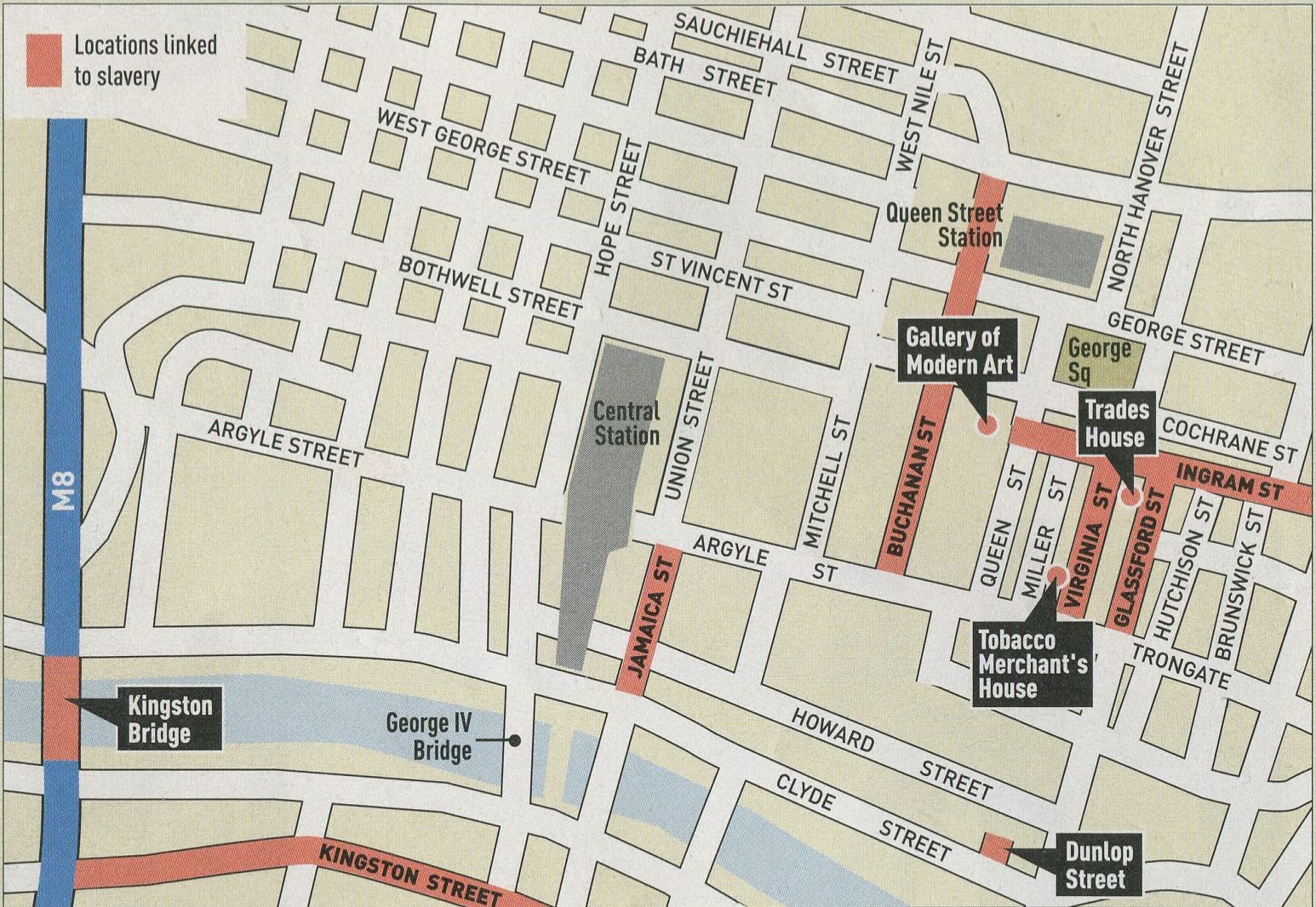 Map of Glasgow
|

Glencoe | Ben Nevis | Knoydart | Isle of Skye | Isle of Arran | The West Highland Way
The Eastern Highlands | The Central Highlands | The Southern Highlands | The NW Highlands